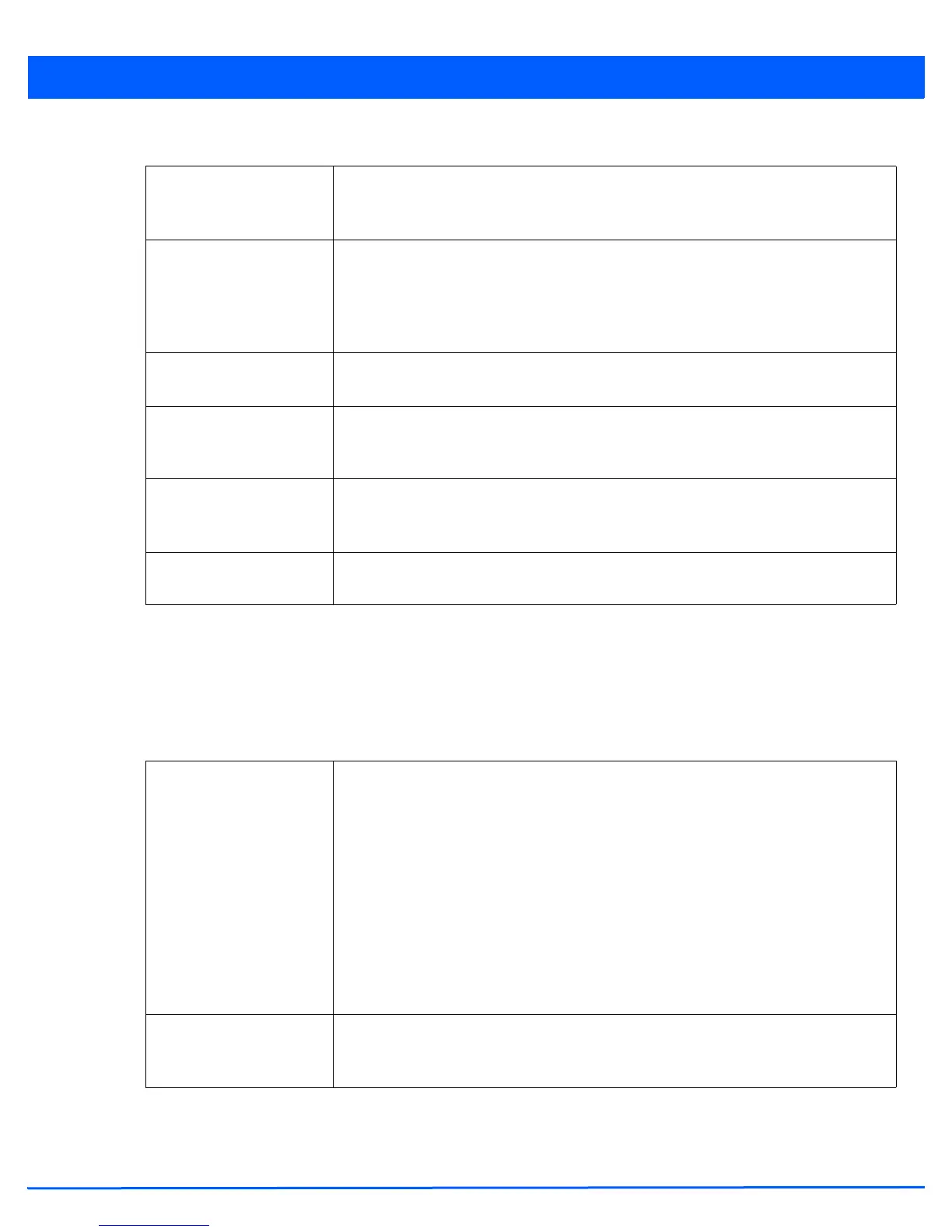9 - 6 WiNG 5.5 Access Point System Reference Guide
6. Define the following Settings for the captive portal policy:
7. Use the AAA Policy drop-down menu to select the Authentication, Authorization and Accounting (AAA) policy used to
validate user credentials and provide captive portal guest access to the network.
If no AAA policies exist, one must be created by selecting the Create icon, or an existing AAA policy can be selected and
modified by selecting the Edit icon. For information on creating a AAA policy, see AAA Policy on page 7-12.
8. Set the following Access parameters to define captive portal access, RADIUS lookup information and whether the login
pages contain terms that must be accepted before access is granted:
Captive Portal Policy If creating a new policy, assign a name representative of its access permissions, location
or intended wireless client user base. If editing an existing captive portal policy, the policy
name cannot be modified. The name cannot exceed 32 characters.
Captive Portal Server
Mode
Set the mode as Internal (Self), Centralized or Centralized Controller. Select Internal (Self)
to maintain the captive portal configuration (Web pages) internally on the access point.
Select External (Centralized) if the captive portal is supported on an external server. Select
Centralized Controller for the captive portal to reside on the access point’s connected
Virtual Controller AP. The default value is Internal (Self).
Hosting VLAN Interface When Centralized Server is selected as the Captive Portal Server Mode, use the spinner
control to set the VLAN where the client can reach the controller. 0 is the default value.
Captive Portal Server Set a numeric IP address (non DNS hostname) for the server validating guest user
permissions for the captive portal policy. This option is only available if hosting the captive
portal on an External (Centralized) server resource.
Connection Mode Select either HTTP or HTTPS to define the connection medium. Motorola Solutions
recommends the use of HTTPS, as it offers additional data protection HTTP cannot
provide. The default value however is HTTP.
Simultaneous Users Select the check box and use the spinner control to set from 1 - 8192 users (client MAC
addresses) allowed to simultaneously access and use the access point’s captive portal.
Access Type Select the radio button for the authentication scheme applied to wireless clients using the
captive portal for guest access. Options include:
• No authentication required - Clients can freely access the captive portal Web pages
without authentication.
• Generate Logging Record and Allow Access - Access is provided without
authentication, but a record of the accessing client is logged.
• Custom User Information for RADIUS Authentication - When selected, accessing
clients are required to provide a 1-32 character data string to authenticate the client.
• RADIUS Authentication - An accessing client’s user credentials require authentication
with an external RADIUS resource before access is granted. This is the default setting,
as not all supported access points have an onboard RADIUS server.
RADIUS Lookup
Information
When Custom User Information for RADIUS Authentication is selected as the access type,
provide a 1 - 32 character lookup information string used as a customized authentication
mechanism.

